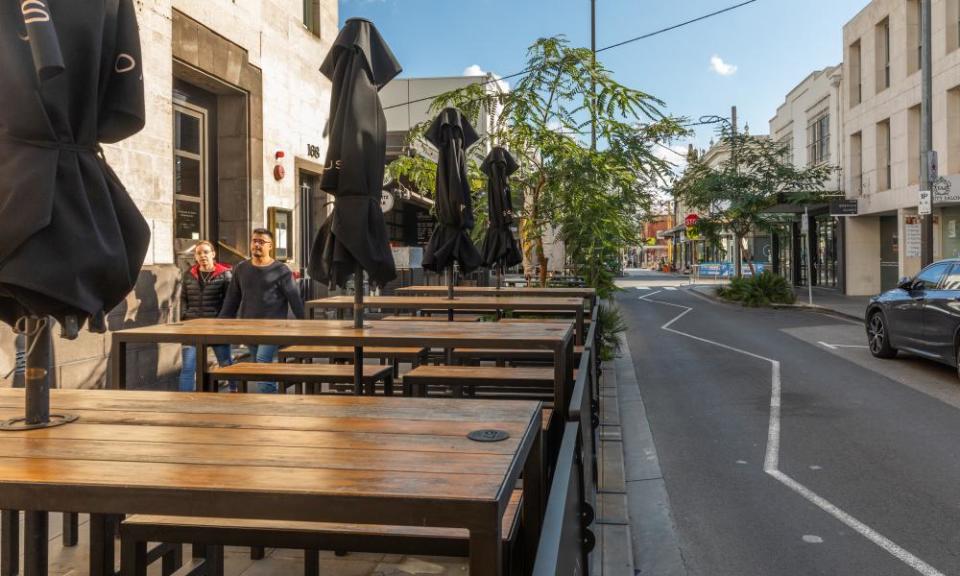Hospitality jobs have taken a hammering. Opening Australia's state borders will not be enough

The goodish news of last week’s unemployment figures have been quickly tempered by the release of the latest payroll job numbers. The figures were released on the day the deputy governor of the Reserve Bank described the recovery as “a slow grind” and they highlight the problems a service-driven economy such as ours faces in the midst of a pandemic.
The latest payroll job numbers by the Bureau of Statistics give us the most current view of the labor force. It is a view that is becoming increasingly bleak.
Where May, June and July saw a nice recovery of jobs as the lockdowns around the country were mostly relaxed, since then the number of jobs has fallen:
Now you might think this contradicts the employment figures that came out last week showing an increase in jobs. The monthly employment figures however include not just employees but sole traders and other managers of businesses as well as family business workers.
The payroll jobs also are weekly, whereas the monthly employment figures take their numbers from the first fortnight of each month:
So these latest figures suggest next month’s labour force figures will likely show a fall in employment.
The temptation will be to say that it is all about Victoria, but we need to look more broadly:
Yes, Victoria is doing worse than all other states, but while they have suffered from the obvious impact of the lockdowns, the rest of the nation is hardly powering on. In the last week of August and the first week of September there were seven and five states and territories respectively that had a fall in jobs:
When we focus on payroll job growth since the recovery began in late April, it’s clear things have slowed everywhere except South Australia which has done better than any other state:
One of the key differences about this recession from the 1990s one is that back then the problem was very much manufacturing and the production of goods, while this current recession is about services.
Even in lockdowns some level of production can continue, but services are hit much harder – especially those for which face-to-face contact is vital, as is the case in the hospitality industry.
And what we see is that while both the arts and recreation and the hospitality industries have been hit the hardest since the pandemic reached our shores, in the past month the accommodation and food services sector continues to be the worst affected:
One major reason is that while restrictions within states have been eased, the state borders have remained somewhat shut, and the national border remains impossible to cross for tourists.
This is an aspect that will continue to cause, as deputy governor of the RBA, Guy Debelle, noted in a speech on Tuesday, “the slow grind” of the recovery.
Compare for example the recovery of all jobs in Queensland with those in the accommodation and food services industry:
The hospitality jobs have taken a hammering in the past month as the border restrictions continued. But for some areas, opening the state borders will not be enough.
Melbourne University economist Zac Gross this week posted on Twitter a graph showing the locations that are most dependent upon international tourists.
Cairns was among the highest and it also was among the areas with the highest percentage of workers in the tourism sector.
It is thus not surprising that the percentage of adults with a job has fallen more in Cairns than anywhere else in Queensland:
Fifteen percent of adults in Cairns have lost employment since March – roughly double the fall that occurred after September 11 and the collapse of Ansett in 2001.
And while hospitality is a very boom and bust industry, that is a bust that will take a long time to recover – and one that will not do so until international restrictions are eased and people’s confidence in their safety returns.
Recessions are terrible things, and make no mistake; we are in a deep one right now. The recoveries are always tough, long and bumpy. And while there will be good news along the way, until we and the rest of the world are moving around freely and safely the recovery will be a grind, and a slow one at that.

